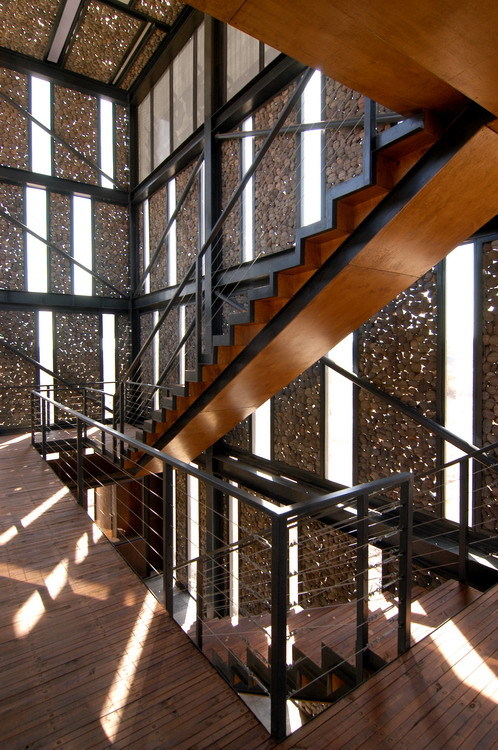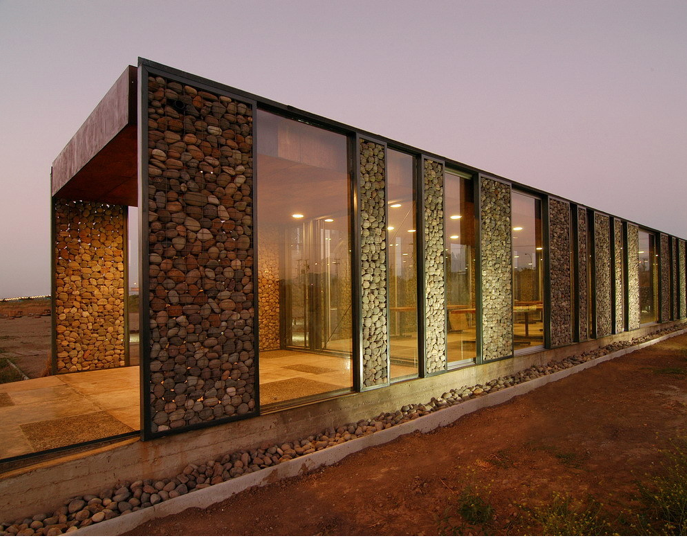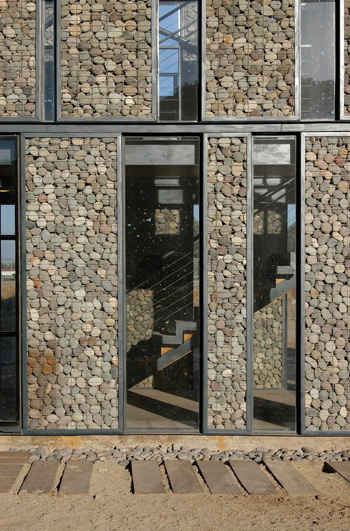INHALE is a cultural platform where artists are presented, where great projects are given credit and readers find inspiration. Think about Inhale as if it were a map: we can help you discover which are the must-see events all over the world, what is happening now in the artistic and cultural world as well as guide you through the latest designers’ products. Inhale interconnects domains that you are interested in, so that you will know all the events, places, galleries, studios that are a must-see. We have a 360 degree overview on art and culture and a passion to share.

This project is part of the Green Plan program of the Ministry of Housing and Urbanism of Chile and the Santiago Metropolitan Park. The idea of this program is to increase the amount of green space per inhabitant in the south of the city, which is very low compared to international standards. “A friendly city” should have about 9-10 square meters of green area per inhabitant, Santiago has less than five and the San Bernardo area has about 2.8.
Together with professionals from the Metropolitan Park and a multidisciplinary team, we have developed, in 37 hectares on the Cerro Chena, the master plan of the future Metropolitan Park South. It comprises five stages, which will be developed in 10 years approximately, and mix both sports, leisure, cultural, and religious activities. It will have a mainly native plant species, picnic, sports, and meditation areas, and terraces. In addition, it comprises the creation of an Environmental Education Center, with an auditorium and workshops, where education will focus on animals and plants from the area.
The first stage was built for safety reasons before reforestation, it is the north access and control building, which includes an information and exhibition area, a gazebo, restrooms and a cafeteria.
The access buildings, at the express request of the client, should be responsible for giving an identity to the park. Rather than creating a new image, we should look for something representative, that was part of the collective unconscious, something that people associate to the Cerro Chena.
This gave rise to the idea of the ruins of Pucara de Chena (military-religious buildings of the Inca Empire located on the slopes of the hill), as an element to be rescued as the image of the future park.
From this, and avoiding falling into the literal, we focus on the material condition of Pucara, and the relationship with this centered on the use of stone as building material.
The intention is to use the stone not as the wide and opaque masonry walls of the existing Pucara, but as slender, translucent, 10 cm walls, that allow light bursting inwards. Thus, the building is designed entirely through steel frames filled with stone boulders in modules of 1 x 3 meters and 0.5 x 3 meters.
Besides the obvious relationship established with the existing Pucara, the use of stone as a building material seeks to reflect the passage of time on its walls. That nature is able to re-form the finished work, with appearing mosses, vines and rust between the stones, different patinas that speak of the passage of time as a strategy when integrated into the landscape.
via archdaily.com






























































